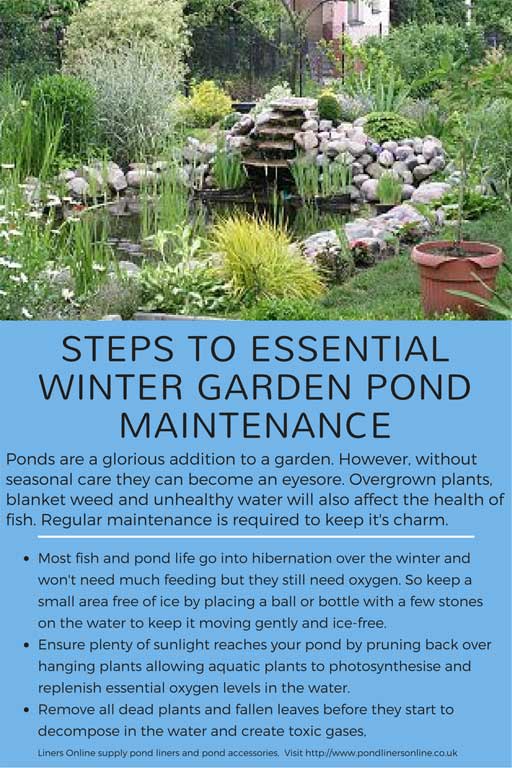Pond care tips for all pond owners to keep your fish happy and algae from going into full bloom at the start of spring.

Winter care
- Remove fallen leaves and any other debris from pond surface
- Dead-head plants (remove dead or spent flowers before it sets seed) to encourage new growth and allow for bigger and brighter blooms of flowers. By removing spent flowers, the plant will have energy to continue to make new flowers instead of producing seeds. If a plant is left to set seed, its life cycle is complete and it will die.
- Remove dead leaves from pond plants and move hardy plants such as lilies towards the deepest part of the pond to prevent their tubers being frozen.
- Fish slow down as the temperatures drop. Feed them easy to digest foods at the start of winter. When temperature drops below 10 degrees C (50F) stop feeding them, as they become increasingly less active and stop digesting food. Plants that would normally remove waste are also in a dormant state. Increased levels of fish faeces would affect the water quality due to ammonia and nitrate build-up . Koi don’t have stomachs so what they eat and their bodies don’t need will be excreted. What they eat is for the purpose of growth, colour and energy. Koi are cold-blooded so metabolism is dependent on water temperature.
- Keep pond from freezing over for any length of time. If you leave the surface frozen-over gases will build-up, oxygen levels will drop affecting the health of your fish.





